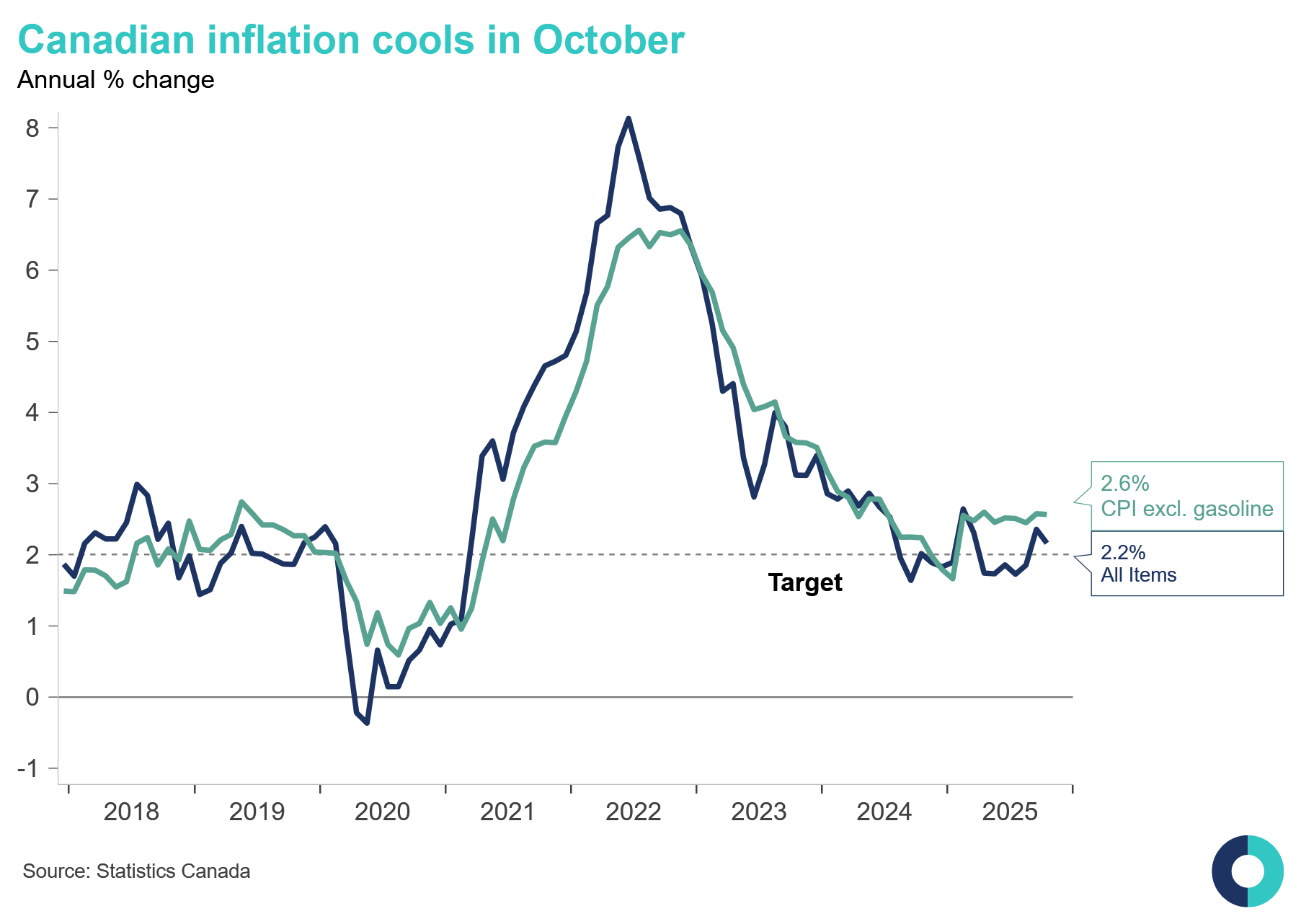Blog /
October 2025 CPI: Inflation cools on lower gasoline and grocery prices.
Canada’s inflation rate slowed from 2.4% in September to 2.2% in October, slightly above the Bloomberg consensus of 2.1%.

Inflation came in better than expected given how prices had been heating up over the past few months. Much of the slowdown came from lower gasoline costs, although an annual property tax hike kept overall inflation higher than it might have been. Grocery prices are finally showing signs of cooling, and the momentum suggests we could see more relief ahead. All in all, this run of more encouraging economic data should give the Bank of Canada enough confidence to keep interest rates on hold for now.
Summary
- Canada’s inflation rate slowed from 2.4% in September to 2.2% in October, slightly above the Bloomberg consensus of 2.1%. The deceleration was driven largely by a sharper decline in gasoline prices. Excluding gasoline, CPI increased 2.6% year-over-year, unchanged from September. On a seasonally adjusted basis, monthly inflation rose 0.1%.
- Core inflation measures averaged 2.9%, a modest easing from last month. The three-month annualized growth rate of the core measures remained stable at 2.6% showing weaker momentum.
Details
- The main contributor to weaker October inflation was the 9.4% drop in gasoline prices, following a 4.1% decline in September. Slower grocery price growth also helped ease overall inflation, with food inflation decelerating to 3.4%. This may signal the beginning of further moderation as monthly prices decline as well, although the broader trend has been edging higher alongside now cancelled counter-tariff measures on food. Clothing and footwear prices also contributed to weaker inflation, falling 0.3% year-over-year.
- Several components continued to put upward pressure on inflation. Prices for cellular services rose 7.7%, the first annual increase since April 2023. Property taxes (updated each October) rose 5.6% this year. Higher insurance costs, up roughly 7%, also added to household expenses. Goods inflation remained contained at 0.9%, led by durable goods, while services inflation remained elevated at 3.2%, its fastest pace in more than four months.
Provincial Trends
Inflation slowed in all provinces except British Columbia and Manitoba. Newfoundland and Labrador’s rate held steady.
Implications
Core inflation remains stable, while headline inflation improved slightly. October’s report adds to a run of more encouraging economic data and supports the Bank of Canada’s decision to keep interest rates on hold. In the absence of significantly weaker economic activity or renewed inflation pressures, the Bank is expected to remain on the sidelines and observe how current monetary policy continues to filter through the economy.


Sources: Statistics Canada; Canadian Chamber of Commerce Business Data Lab















